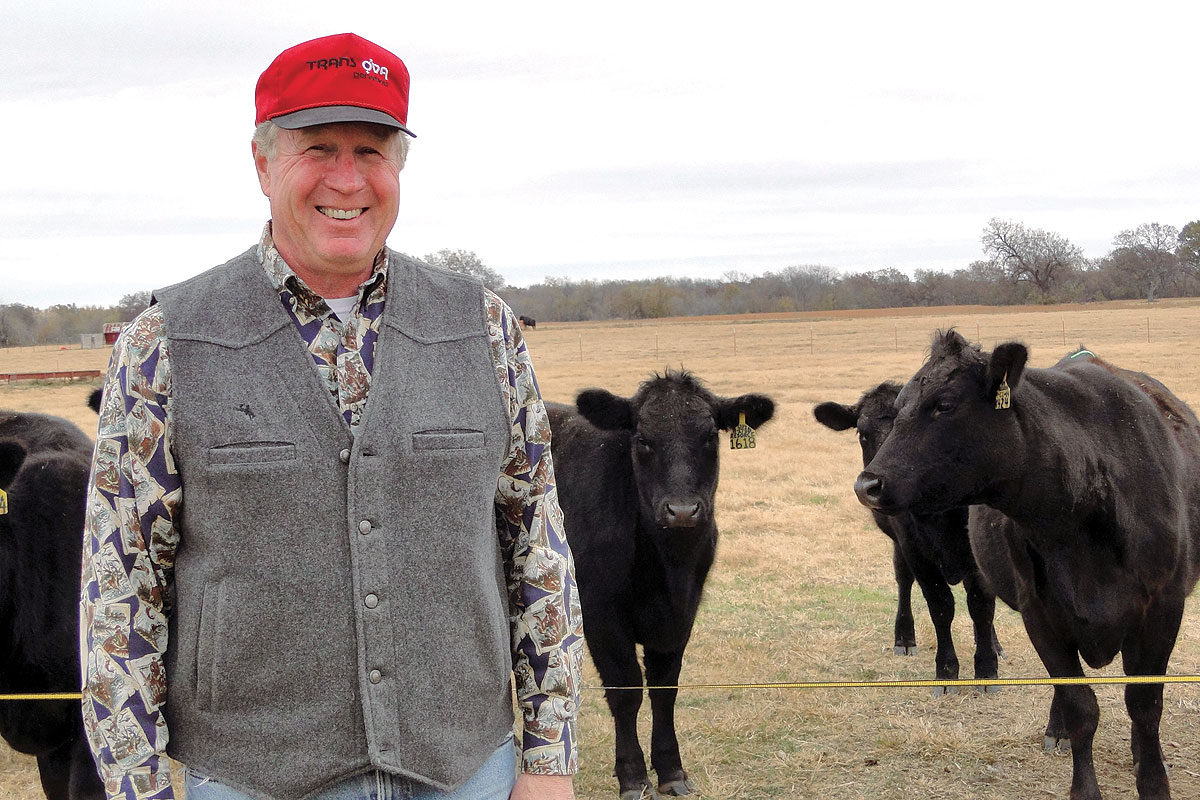
When brothers Kent and Steve Livesay, sons of the late David Livesay, took on their farming partnership of the Livesay Orchards in Porter, Okla., in 1976, adverse weather conditions came with it. Acres of fruit trees and livestock keep the two families involved in the tenable lifestyle. Risk of loss runs high on their 130 acres of peach and apple trees since two of nature’s concerns can instantly be counterproductive and wipe out a season of production. “Difficult challenges and the highest risk on our farm is a spring freeze after blooming. Normally a freeze would not kill trees but would keep the fruit trees from producing. We have had spring freezes and it is just not practical to cover peach trees when you have thousands of them,” said Kent. Drought also makes it difficult. They have limited amounts of water in some of the orchard locations but most of the peach trees have irrigation.
Peaches are a labor intensive crop. “If it were not for the help of others, we would be behind,” said Kent. Kent’s wife, Dawna and their two sons, Nathan and Kyle, help him and Steve work the farm along with other family members. Nephew Brian Livesay, graduated in May from Oklahoma State University with a degree in Agriculture and niece Melanie Warren both maintain full-time jobs outside of the part-time work performed on the farm.
The trees bloom in mid-March and typically bare fruit from mid-June to early October in some years with a peak season in July and August. They have 40 or more varieties of peaches with the Loring being the most favored of the peaches. The farm originally had 55 acres of peaches and 45 acres of apples and a few head of cattle. There was no previous orchard experience prior to the purchase. Today their peaches stretch across 120 acres while the apples occupy just 10 acres. “Oklahoma’s climate is better adapted to peaches than apples which explains the decrease of apple acreage due to the hot climate,” said Kent. Livesay Orchards also grows watermelon, pumpkins, tomatoes and nectarines. When it comes to immediate storage, the cold storage facility is critical for the storage of fresh picked fruits and vegetables. Livesay Orchards will be closing on their FSA funded Farm Facility Storage Loan (FFSL) soon to accommodate their cold storage needs.
Although raising cattle is still a part of the business, it is a minor part. Property not useful to other agriculture is best used for grazing. The small herd of crossbred Angus and Brahman are mostly for replacement heifers with a calving season in the spring. Storage of the hay is part of managing the risk of loss associated with variant weather conditions of uncovered hay while also maintaining the health of the herd.
Hay loss is a major concern for farmers, especially if there is not adequate storage. Hay storage protects the hay from wet weather which can prevent loss of forage, death to horses and other animals due to the release of toxins from mold or spoilage, nutritional loss and spontaneous combustion for improper storage. The USDA’s Farm Service Agency (FSA) provides direct and guaranteed loans to farmers and ranchers for beginning farmers. They also provide low-interest loans to avid producers regardless if they are unable to obtain financing from other commercial credit sources.
“We recently closed on a couple of hay barns, which is groundbreaking. Most producers think they need to contact us as a last resort. Congress has farm loans set up for those who cannot get credit anywhere but that is not the case with FSA,” said Brian Hisey, County Executive Director of USDA’s FSA. “Producers can obtain a low-interest loan through the FSA after meeting specific qualifications.”
“Brian Hisey with FSA has been a tremendous help for us by knowing what we needed. When starting any farm, it is always best to start small. A small farm means a small risk of loss,” said Kent.







